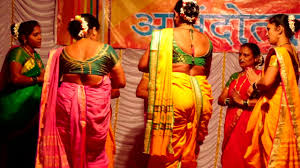Significance of Baisakhi and Bihu





Significance of Baisakhi and Bihu
Energetic Festival of Baisakhi and Bihu are considered to be important festivals in India for various reasons. Apart from being important for the farmers as a harvest festival, the festival is of prime importance in Sikhism as a foundation day of Khalsa Panth. The festival of Baisakhi and Bihu falls on April 13 every year and April 14 every year.
Bihu- A festival that marks the change of season. Astrologically, the date of Baisakhi is significant as marks sun’s entry into Mesh Rashi. For this very reason, many people also know Baisakhi as Mesha Sankranti.
The auspicious date of Baisakhi is celebrated all over India under different names and rituals. It is celebrated as 'Rongali Bihu' in Assam, 'Naba Barsha' in Bengal, ‘Puthandu’ in Tamil Nadu, 'Pooram Vishu' in Kerala and ‘Vaishakha’ in the state of Bihar. For the agriculturally rich state of Punjab and Haryana, Baisakhi marks the time for harvest of Rabi (winter) crops and is therefore extremely significant for the farmers. Farmers also celebrate Baisakhi by performing energetic Bhangra and Gidda dance and participating in Baisakhi fairs.
Baisakhi is of major importance for the people following Sikh faith. As it was on a Baisakhi Day, in the year 1699 that the Tenth Guru of Sikhs, Guru Gobind Singh founded Khalsa Panth or the Order of Pure Ones and gave a unique identity to Sikhs. On the same day the guru administered amrit (nectar) to his first batch of five disciples making them Singhs, a martial community. By doing so, he eliminated the differences of high and low and established that all human beings were equal.
One of the seven northeastern states of India which are also known as the Seven Sisters, Assam is renowned for its picturesque landscape, exotic fauna and fun-loving people.
Initiated during the Aryan period the festival of Bihu used to last for a whole month, though nowadays work pressure has reduced it to a week. Bihag Bihu or Rangoli Bihu, the first of the three Bihus, is celebrated in the month of April on the dates coinciding with the sankranti, chait or baisak (13, 14 and 15 April). The vivid attire of the Assamese youth and the colourful accessories like kopoful adorning the hair of the young lasses blend with the hues of nature, spreading joy and good cheer. The day is marked with dancing, though restricted exclusively to men, who participate with unbridled enthusiasm and energy. But the winds of change have blown through this remote state also. Surrendering to contemporary trends, youngsters gather in the town centre and learn the steps from an old hand much in demand on this day.










Comments